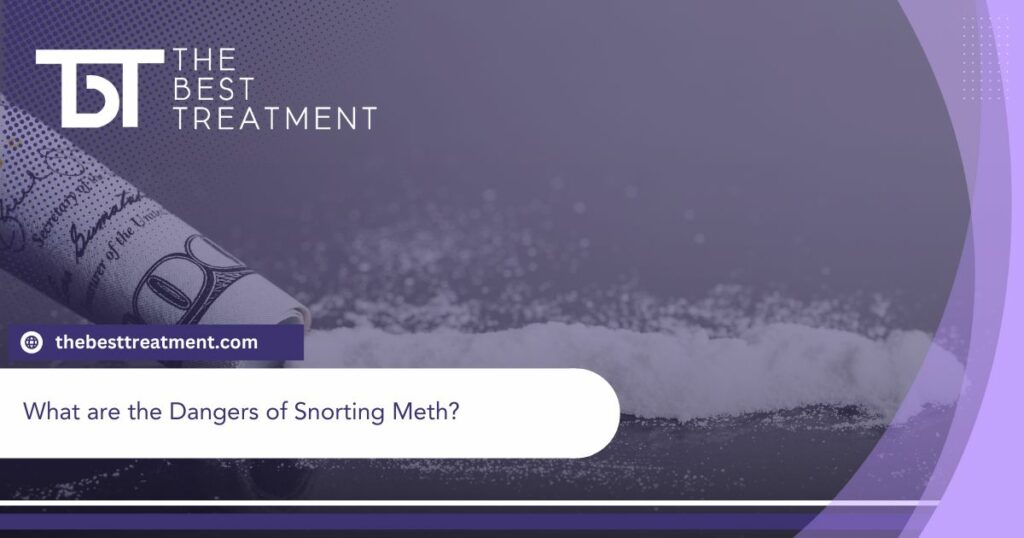Table of Contents
Methamphetamine is a dangerous, illicit drug. People may develop meth addiction after just a short period of using it. Meth changes the way your brain and body function, making it very challenging to quit using it.
The effects of meth abuse and addiction can be devastating. Meth abuse can cause a range of physical and psychological symptoms.
Meth mites are one psychological symptom of meth use. People may call them “crank mites” or “meth bugs.” Meth mites are a term for the sensation of bugs crawling under the skin many meth users experience.
This article will explore meth mites and other side effects of meth. You will learn:
- What meth bugs are
- The danger of meth mites
- The effects and risks of meth abuse
- How to find treatment for meth addiction
Contact The Best Treatment specialists now to explore our comprehensive methamphetamine addiction treatment programs or to schedule an intake assessment.
Meth Mites: An Overview
Methamphetamine is a powerful, addictive stimulant that was derived from amphetamine. The U.S. Drug Enforcement Administration has labeled it a Schedule II Controlled Substance and it has limited medical uses such as for the treatment of ADHD and weight loss treatment. However, it is highly addictive, so it is rarely prescribed. People make meth in illegal labs using a mixture of dangerous chemicals and household ingredients.[1]
People may use powdered methamphetamine or a solid form called crystal meth. Users ingest meth by inhaling, smoking, or swallowing it. The short-term effects of meth include:
- Increased heart rate
- Elevated blood pressure
- Increased energy
- Euphoria
Users may also experience unwanted side effects, including:
- Paranoia
- Violent or unpredictable behaviors
- Confusion
- Depression
- Delusions
- Hallucinations
People who use meth for a long time may experience long-term meth effects, including:
- Severe dental problems and tooth decay (meth mouth)[2]
- Malnutrition or severe weight loss
- Lung damage
Another common side effect of meth abuse is meth mites. Meth mites are not actual insects. Instead, users may have the sensation of bugs crawling under their skin.
Psychotic symptoms of meth use, including imaginary bugs under the skin, can be distressing. People may have intense itching that keeps them from sleeping or functioning.
What Causes Meth Bugs?
Meth is a highly addictive and dangerous drug. Methamphetamine abuse can cause psychological side effects, including meth mites.
Mental health and addiction experts believe there are several potential causes of meth mites. Here is an overview of what may cause this problem.
Formication hallucinations
Formication hallucinations can cause people to believe that bugs are crawling beneath their skin or on their bodies. Several conditions can cause formication hallucinations, including:
- Parkinson’s disease
- Depression
- Certain prescription drug use
- Meth abuse
People who abuse meth may experience intense itching that reinforces the belief that bugs are under their skin.[3]
Impaired immune system
Meth abuse can suppress the immune system and prevent open sores from healing.[4] Wounds may become infected, which can lead to significant health problems.
Restricted blood flow
Methamphetamine increases central nervous system (CNS) activity. It constricts blood vessels, which can reduce blood flow to the skin, which may result in itching and discomfort.[5]
Meth mites are the result of hallucinations that occur as a result of meth abuse. If you or someone you love lives with meth abuse or addiction, you must seek substance abuse treatment immediately to avoid severe complications.
The Danger of Meth Mites
Meth mites can cause severe damage to your skin and general health. Here are some of the dangers of meth mites.
Sleep deprivation
Meth is a stimulant that can impact sleep. People who develop meth mites may be so uncomfortable that they cannot get the sleep they need to stay healthy. Poor sleep can contribute to mental and physical health conditions.
Infections
People may scratch or pick at their skin to relieve the discomfort of meth bugs. This can lead to open wounds that become infected. Skin infections require treatment and care.
People who abuse meth may not take care of their skin or seek treatment when needed. This can lead to lingering infections and more serious complications.
Scarring
People who abuse meth may scratch and pick at the skin on their faces or bodies until they bleed. A lack of care and continued itching can cause wounds to heal slowly and leave lasting marks.
Scarring may be permanent. People who abuse meth may have significant scarring on their bodies and faces that will remain even if they recover from their addiction.
There is no quick fix for meth mites. People who abuse meth must get help to stop using this dangerous drug.
Treatment for Meth Addiction
Meth addiction treatment happens in several levels of care and many settings. It is common for people to attend an inpatient detox and treatment program before transitioning into outpatient care.
Treatment for meth addiction may begin in a detox program. During detox, people receive medications and mental health treatment to manage withdrawal symptoms and avoid relapse.
Then, people transition into a comprehensive treatment program that includes counseling, medications, education, and holistic therapies. Comprehensive rehab programs can provide the support and treatment people need to overcome addiction and avoid relapse in the future.
Find Treatment for Meth Addiction
If you or someone you love struggles with meth abuse or addiction, you are not alone. Contact The Best Treatment specialists to explore our treatment programs or schedule an intake assessment.
References:
- National Institute on Drug Abuse (NIDA): What is methamphetamine?
- American Dental Association (ADA): Methamphetamine
- National Institutes of Health (NIH): Refractory Methamphetamine-Induced Psychosis: An Emerging Crisis in Rural America and the Role of Amantadine in Therapeutics
- National Institutes of Health (NIH): Impact of methamphetamine on infection and immunity
- National Institutes of Health (NIH): Methamphetamine causes sustained depression in cerebral blood flow
Medically Reviewed: September 25, 2019

All of the information on this page has been reviewed and verified by a certified addiction professional.










